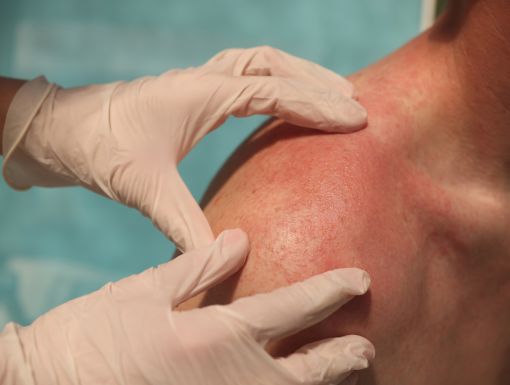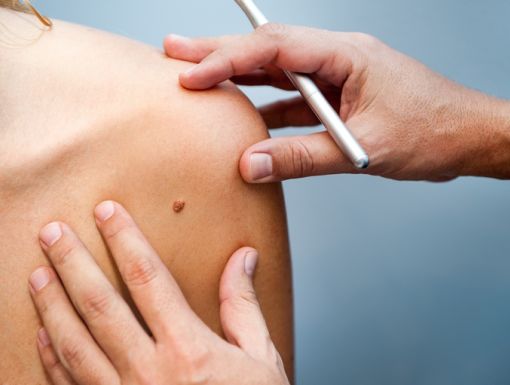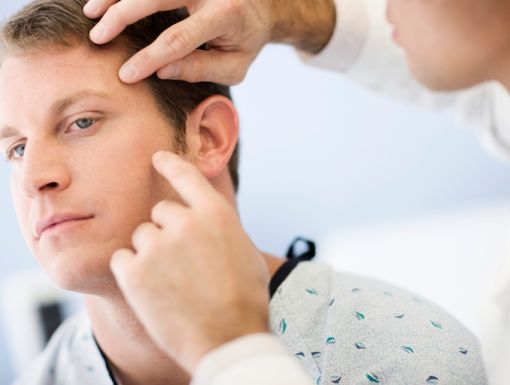
Nooks and Crannies: Easy Skin Cancer Self-Check
Skin cancer is the most common cancer in the United States. Some people are at a higher risk than others, but anyone can get skin cancer. The most preventable action to take is to avoid overexposure to ultraviolet light which can be from the sun or artificial sources, like tanning beds.
Of course we all know that we should avoid getting sun burned, avoid tanning beds and use sunscreen anytime we are outdoors, but what else can you do?
You Can Check Yourself
Skin cancer can develop anywhere on the body. When checking yourself, take note of all the spots on your body: moles, freckles and age spots. According to the American Academy of Dermatology, follow these steps to complete a thorough skin cancer self-exam monthly. Leave no area un-examined!
- Examine your entire body in the mirror, especially focusing on your legs.
- Bend your elbows to looks carefully at your forearms, the back of your upper arms and even your palms.
- Surprise! Look at your feet, the spaces between your toes and your soles. Skin cancer can even pop up in the places that aren’t usually directly in the sun.
- Examine the back of your neck and your scalp, parting your hair and lifting to make sure you examine the entire surface. Use a mirror or ask a friend if you can’t get a good look.
- Don’t forget about the back. Make sure you check your back and buttocks with a mirror.
What You Should Be Looking For
Taking note of all of the spots that look unusual is a key factor in the self-exam. After taking note, ensure that you follow the ABCDEs of Melanoma when keeping an eye on these spots.
- Asymmetry – one half of the spot looks different from the other.
- Border – the border is irregular, poorly defined or scalloped in any way
- Color – the color isn’t consistent throughout the spot. One area of the spot might be brown or tan, while the other area is darker.
- Diameter – the diameter is greater than 6 millimeters, the size of a pencil eraser.
- Evolving – the shape, size or color looks different from the rest and is changing.
Make a Dermatology Appointment
Once you self-screen, if you find unusual spots following the ABCDEs, the next step is to set up a skin cancer screening with your dermatologist.
- Do expect to be asked to put on a gown so the doctor can complete a comprehensive exam.
-
Don’t expect to be there for hours. The process doesn’t take long, but doctors should be thorough, check all areas and review areas of concern with you.
-
Do be prepared to discuss the symptoms of your unusual spots, past exposures to causes of cancers and how frequently you should return based on your current spots and history with skin cancer.
-
Don’t be afraid to schedule your appointment. Any questions or concerns are worth a conversation, especially if the diagnosis skin cancer can be avoided.
After following these simple steps, you’re prepared to be the best second line of defense against skin cancer, only after smart sun practices. Happy summer!



